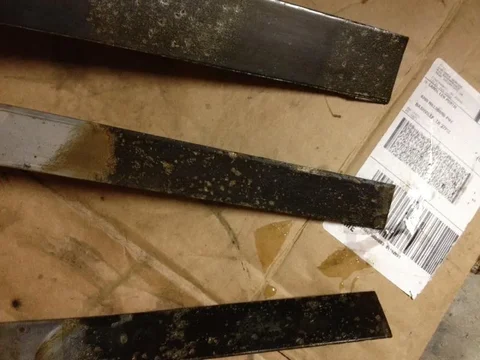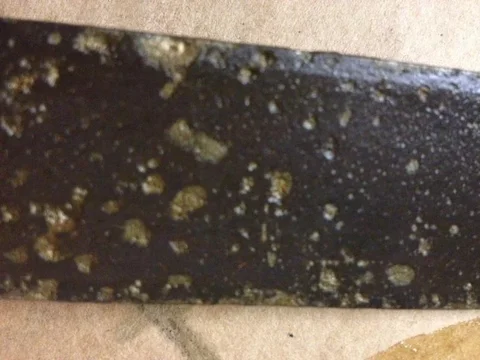Vae Victus
Posting more than I know
EDIT: More electrolysis threads around the inter web:
http://www.smokstak.com/forum/showthread.php?t=28471
http://www.oldengine.org/members/orrin/rustdemo.htm
http://www.instructables.com/id/Electrolytic-Rust-Removal-aka-Magic/
http://users.eastlink.ca/~pspencer/nsaeta/electrolysis.htm
http://myweb.tiscali.co.uk/andyspatch/rust.htm
http://www.jalopyjournal.com/forum/showthread.php?p=4576556
After reading CoolerMan's web page (http://www.globalsoftware-inc.com/coolerman/fj40/rustremoval.htm) on how to do electrolysis rust removal, I set a rig up today. I have it hooked to a Craftsman battery charger that does 2 amps minimum. I have a smaller one that can do 750 mA but that seems too low.
Does anyone know the right range for amperage? Is too aggressive bad? Will it eat the metal and not just the rust?

Used 3 x 16-14 ga steel strips

The blue lead is a 316L TIG welding rod - stainless. Putting copper leads in the solution is bad.

12 ga copper leads from positive to electrodes (anodes). Cathode to the part.

Hooked to Battery Trickle Charger

Used 2 empty plastic bottles with top and bottom cut out, stacked to keep the metal electrodes from touching the part





http://www.smokstak.com/forum/showthread.php?t=28471
http://www.oldengine.org/members/orrin/rustdemo.htm
http://www.instructables.com/id/Electrolytic-Rust-Removal-aka-Magic/
http://users.eastlink.ca/~pspencer/nsaeta/electrolysis.htm
http://myweb.tiscali.co.uk/andyspatch/rust.htm
http://www.jalopyjournal.com/forum/showthread.php?p=4576556
After reading CoolerMan's web page (http://www.globalsoftware-inc.com/coolerman/fj40/rustremoval.htm) on how to do electrolysis rust removal, I set a rig up today. I have it hooked to a Craftsman battery charger that does 2 amps minimum. I have a smaller one that can do 750 mA but that seems too low.
Does anyone know the right range for amperage? Is too aggressive bad? Will it eat the metal and not just the rust?

Used 3 x 16-14 ga steel strips

The blue lead is a 316L TIG welding rod - stainless. Putting copper leads in the solution is bad.

12 ga copper leads from positive to electrodes (anodes). Cathode to the part.

Hooked to Battery Trickle Charger

Used 2 empty plastic bottles with top and bottom cut out, stacked to keep the metal electrodes from touching the part
Last edited:

 and keep us posted with befores and afters
and keep us posted with befores and afters








